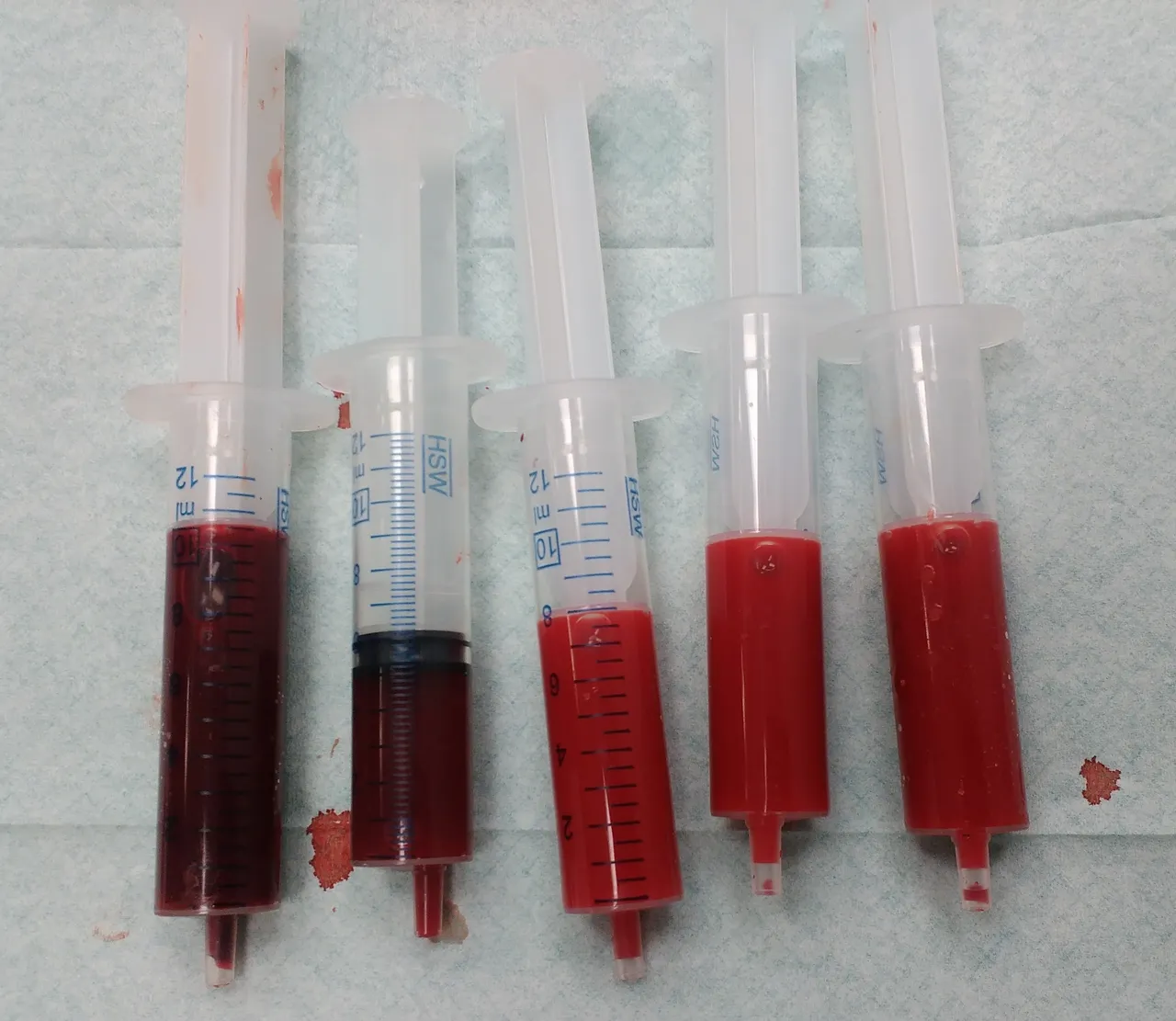Arterial Blood Gases refer to the arterial level of oxygen, carbon, and other gases in the artery confirming if the blood is basic or acidotic. This can be respiratory acid or base or metabolic acid or base, stemming from the lungs or kidney. For instance, if there is excessive carbon dioxide in the lungs the blood will be acidotic or in an acidotic state, and if there is more oxygen and less carbon dioxide, then the blood will be in a basic state. People are always in an acidotic state when sleeping as the breathing level is slower causing the carbon dioxide to be kept more in the lungs, and when they are hyperventilated where the breathing is fast, the person breaths out all the carbon dioxides, leaving the lung to be alkalosis. With the kidney, if the base in the body is eliminated, then the blood will be in an acidotic state, and the same thing applies to eliminating all the acid in the body, leaving the body to be in a basic state. If the arterial blood pH is less than 7.35, the patient is acidotic, and if the arterial blood pH is above 7.45, then the patient is alkalotic. It is important to know that the normal pH of the blood is between 7.35 to 7.45. If the patient blows off excessive carbon, the partial pressure of carbon dioxide in arterial blood (PaCO2) will be 38 to 42 mm Hg (5.1 to 5.6 kPa), and if the patient keeps a lot of carbon dioxide in the body blowing out excessive oxygen, then the partial pressure of oxygen in arterial blood (PaO2) will be below 75 to 100 millimeters of mercury (mm Hg), or below 10.5 to 13.5 kilopascal (kPa). The normal level for partial pressure of oxygen dissolved in the blood is 10.7 to 13.5 KPa, and the normal partial pressure for carbon dioxide in the blood is 4.7 to 6.0 KPa. Bicarbonate is normal in the blood (HCO3) at 22 to 28 mmol/l, the normal Base excess value is -2 to +2, and Lactate is 0.5 to 1 mmol/l. A low pH, and a high Carbon dioxide present in the blood (PaCO2), indicate respiratory acidosis.
Being able to understand blood gas analysis is very important when interpreting circulatory, metabolic, and respiratory disorders. The base is stored in the lower gastrointestinal tract in the body, and this can be lost in the process of the constant visit to the toilet as a result of diarrhea, causing the body to the acidotic. When throwing up, more acidic contents are eliminated, leaving the body alkaline, or in an alkalosis state. The body always maintains an acid-base pH scale. If the pH is below 7.35, then the patient is Acidotic, and if the patient's arterial blood pH is above 7.45, then the patient is Alkalotic. Bicarbonate is produced by the kidney but in the case of acute respiratory acidosis, the bicarbonate isn't produced as efficiently as needed to compensate for the carbon dioxide increase level, so when the kidney keeps producing bicarbonate, then it is a sign that the patient has carbon dioxide stored up in the lungs, and the kidneys need to keep producing the bicarbonate to balance the carbon dioxide in the lungs but the patient becomes acidotic when the kidney cannot keep up with the increase in carbon dioxides in the lungs. Just as I previously said that when a person has an increased respiratory rate, blowing off carbon dioxide and having more oxygen in the body, it is known as Respiratory Alkalosis. This will lead to a high pH and a low partial pressure of carbon dioxide in arterial blood (PaCO2). This case occurs with hypoventilation syndrome and pulmonary embolism.
Type 1 respiratory failure occurs when a patient has a lower PaO2 and normal PaCO2. If the patient has a raised PaCO2, and a low PaP2, Then this is a type 2 respiratory failure. Metabolic Acidosis is a result of a low pH, low Bicarbonate (HCO3), due to raised lactate which indicates tissue hypoxia, and increased ketones (diabetic ketoacidosis). Metabolic alkalosis presents with a high pH and a high Bicarbonate (HCO3). This can happen with the loss of acids from vomiting or in the case of Conn's syndrome where the kidney has an increased aldosterone activity causing a rise in hydrogen ion excretion in the body.
Conclusion
To perform this procedure, arterial blood would be collected by inserting a needle and collecting blood from the radial or femoral blood artery. This procedure helps to identify the Acid-Base Balance, Blood gases (which have to do with the amount of oxygen and carbon in the blood), and the amount of lactate, hemoglobin, electrolytes, and bicarbonate. When analyzing arterial blood gas, it is important to confirm if the patient is hypoxic (respiratory failure). It is important to look at the PaO2 first, and if the PaO2 is below the normal value, then it represents hypoxia. The Fraction of inhaled oxygen (FiO2) should be considered as well.
Citation
https://www.ncbi.nlm.nih.gov/books/NBK482430/
https://www.ncbi.nlm.nih.gov/books/NBK536919/
https://www.ncbi.nlm.nih.gov/books/NBK482117/
